Byzantine Empire
7th century BC - 15th century
the Athenian general Alcibiades seized the city In 409 BC, and the Spartan general Lysander took it back four years later only to have it recaptured once again by Athens. Byzantium recovered its independence with the help of Persia and Rhodes, which lasted until 341 BC when it was surrounded by Macedonian soldiers under King Philip II. In a last desperate attempt to stave an invasion the Byzantines sided with Athens but both cities were eventually forced to recognize Macedonian rule under King Philip’s son Alexander. After Alexander’s death they regained their freedom, but the warring continued.
The city was attacked by the Scythians, a nomadic tribe from southeast Asia, and blockaded by the Celts from the northwest who, in 279 BC, imposed a tax on the city. To meet their demands the Byzantines slapped a tax on passing ships which started a war with Rhodes.
The Byzantines allied with the Romans in the battle against the Syrian king Antiochus III. To return the favor Rome allowed the city to remain autonomous, at least initially. The population had to pay heavy taxes as punishment for a popular uprising against the Roman Emperor Lucius Septimius Severus c 200 AD. Severus razed the city walls and revoked the citizens’ privileges.
Byzantium, off the Mediterranean overlooking the Black Sea, was allegedly named after King Byzas of Megara (where the Megerian school was founded after Socrates' died). Because of its strategic location Byzantium was constantly attacked and finally overpowered by Persian troops under King Darius, around 513 BC.
After Darius' death the Byzantines went through a dark period until Sparta occupied the region circa 400 BC. The Spartans rebuilt the city and spent the next hundred years defending it from Athens.
Emperor Heraclius saved the city from a Persian invasion but could not keep the Arab Muslims from taking Syria, Palestine, Egypt, North Africa and Sicily. Though still a cultural stronghold at the turn of the century, the Byzantine Empire was living the last vestiges of its past grandeur while the popes in Europe gained more power and amassed great wealth. The Catholic Church in Rome was different in every possible manner to its sister in the East. The Byzantine civilization was far more intellectually and scientifically advanced than its Christian counterpart, and Constantinople was a city where scholars of different religious beliefs came to study and share their views.
When Heraclius’ grandson Constans II became emperor in 641 the Muslims had occupied Byzantine territories in Asia Minor, Armenia and Cyprus, and were advancing towards Sicily. Constans launched several successful military campaigns but a theological question on the dual nature of Jesus threw him and Pope Martin I into a fierce argument.
Constans had Martin arrested and exiled. Martin tried to take up residence in Rome but the Lombards gave him such a hard time he moved to Syracuse. His son Constantine IV had to defend Constantinople against repeated attacks by the Muslims from the sea until they finally withdrew in 678. The Muslim retreat is attributed to the use of “Greek fire” by the Byzantines. Greek fire sent flaming liquid from tubes made of bronze. The Byzantines placed large tubes along their walls and on the prows of their ships to shoot heavy sprays of fire over the enemy. Constantine was succeeded by Justinian II, who lost land to the Persians and lived an extravagant lifestyle that caused a revolt in 695.
Leo III (or Leo the Syrian) had held several military and diplomatic positions before deposing Theodosius III as emperor in 717, ending the social strife that had burdened the empire since Justinian II. He successfully defended Constantinople against a siege by the Muslims and created greater efficiency in the military provinces. In 726 Leo began an assault on religious images, which he believed led to idolatry. Iconoclasm, as the movement is called, was continued by his successor Constantine V. Iconoclasm in Byzantium was most certainly inspired by Islam, where religious images had always been banned. Because of Constantine’s unbending policies against images of worship, which was an integral part of the Roman Catholic tradition, Byzantium was relieved its strongholds in Italy and Pope Zacharias cut ties with the Byzantine emperor. Constantine restored Constantinople after a plague, and improved the water supply.
Constantine V’s son Leo IV became emperor in 775 and upon his death his Greek wife Irene acted as regent for their son Constantine VI, until she took the crown for herself. Irene was dedicated to suppressing iconoclasm and neglected to address the advancing Arabs and Bulgars (tribes from Russia who eventually embraced Islam). She was deposed and succeeded by Nicephorus I, who was killed at war. His son-in-law Michael I was crowned emperor in 811. He sided with the pope against the policy of iconoclasm and recognized Charlemagne as Holy Roman Emperor. After he was defeated by the Bulgars Michael was deposed and succeeded by Leo V who signed a thirty year treaty. Leo revived iconoclasm and persecuted the followers of Theodore of Studium, an abbot who was repeatedly exiled for not complying with the emperors’ wishes. He opposed Leo over his decision to enforce iconoclasm and was exiled for the last time in 814. Theodore restructured monastic life and his system was followed by the Basilian Monks - in honor of (Saint) Basil the Great who lived in Greece around 360.
Romanus I originally claimed the crown but was deposed by his own sons. Constantine VII recovered his position as emperor in 945 and set about making legal reforms where land was distributed amongst the peasants, and social reforms by advancing education and art. Constantine VII was succeeded by his son Romanus II but his wife Theophano was the one who controlled and protected Constantinople from Muslim attacks. After Romanus died she married Nicephorus II, who was instated as emperor by his troops in 963. He took land from the monasteries and imposed heavy taxes to fund the wars against the Muslims and the Bulgars. He was murdered by his wife’s lover, John I, a general from Armenian nobility, who became the next emperor. He recovered Bulgaria from Russia and pushed the Muslims back from Byzantium’s eastern borders. He also returned monastery property confiscated by Nicephorus.
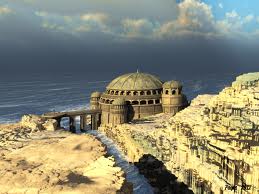
In 324 AD Roman Emperor Constantine I created a second center for the Roman Empire. He called it Nova Roma (New Rome) before it was renamed Constantinople.
Around the year 500 Emperor Justinian I revived Greek literature and art. He kept the Persian armies at bay with the help of his generals and the wise council of his wife Theodora, a former actress.

Emperor Justinian and Empress Theodora with attendants.
Leo was assassinated by the followers of Michael II, who became the next emperor of Byzantium. He was personally in favor of iconoclasm but did not forbid images. In 825 he lost Crete to the Arab Muslims. Michael was succeeded by his son Theophilus, and by his grandson Michael III, who was opposed to iconoclasm and persecuted the Paulicians, an ascetic Christian sect that favored the decree.
Meanwhile the Arabs were increasing their raids along the border and intrepidly gathering ground in Sicily. Michael plotted to kill his mentor, Bardas, with the help of Basil I of Macedonia. Basil became co-emperor until he had Michael assassinated.
Basil was succeeded by his son Leo VI in 886, also called Leo the Wise, or Leo the Philosopher. Soon after, the Arabs seized the city of Taormina from the Byzantines, thus occupying all of Sicily. Leo was succeeded by his brother Alexander and his son Constantine VII.
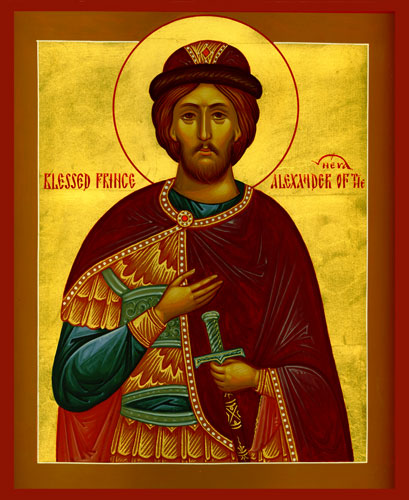
The Crusades
The Muslims’ growing strength outweighed the frictions between Byzantium and Rome, and Alexius asked Pope Urban II for help in defending Constantinople’s southern border from the Turks. A request he would bitterly regret. The pope did not just send soldiers; he sent entire armies under the banner of a “Holy Crusade” that only created more problems and conflicts for the Byzantine emperor. The first of nine Crusades set off in 1097. Initially the objective was to save Constantinople and protect pilgrims headed to the Holy Land. However, the underlying motives of the European kings, who had invested in the campaign, were financial and territorial. In the end Christian presence in the Eastern Mediterranean became as much a threat for the stability of the region as the Muslins.
Isaac II (great-grandson of Alexius I) was crowned emperor in 1185 after a revolt against the unpopular Andronicus I. Isaac pushed back the Normans but continued to battle against the intrepid Bulgars. His reign was tarred by corruption and he was deposed by his brother Alexius III in 1195. Isaac’s son Alexius IV joined the 4th Crusade to retrieve the crown from his uncle. The crusaders - funded by Venice - captured Constantinople in 1203. Isaac II and Alexius IV became joint emperors.
Alexius V (son-in-law of Alexius III) took Constantinople back from the Crusaders but shortly after the city was recovered by the Europeans, who crowned the noble Baldwin I as the first emperor of the Latin Empire of Constantinople, in 1204.
Michael VIII recovered the city from Baldwin II in 1261 and was crowned emperor. He restored the Byzantine Empire and negotiated with Pope Gregory X to reunite the Eastern and Western Churches. He also agreed to recognize the supremacy of the popes in Rome. However the Ottoman Turks, led by Sultan Muhammad II, invaded the grand city in 1453 and destroyed it.
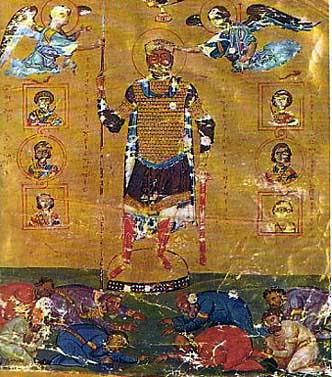
Byzantine emperors Basil II and Constantine VIII (sons of Romanus II) ruled jointly between 976-1025. Basil annexed Bulgaria and extended John’s conquests in the east. Constantine’s daughter, Empress Zoë, married Romanus III when she was fifty to please her father but apparently Romanus was a negligent husband.
Zoë allegedly had him killed and married her lover Michael IV allegedly the night her husband was buried. Zoë and Michael initially ruled together but he ultimately ousted her from public affairs. After his death his nephew placed Zoë in a monastery but a public outcry sent him packing and spared her a life of celibacy.
Meanwhile Zoë’s younger sister, Theodora, was crowned joint empress. A few weeks later Zoë married Constantine IX, and the trio governed jointly until Zoë’s death.
Emperor Basil II
1453
The invasion of Constantinople was the end of the Byzantine Empire and beginning of the Ottoman Empire. The date is important as it a turning point, a shift of power. Constantinople had been the only barrier to keep enemies from advancing unhindered into Western Europe.
The victory of the Turks over Constantinople was a huge setback for the Pope, diminishing even further the powers of the Church. Intellectuals fled from Constantinople to Italy, making it even harder to enforce the ban on all things Greek.
Constantinople was renamed Istanbul, and prospered. The Ottoman civilization reached its highest point during the reign of Sultan Suleiman between 1560 and 1566. It lasted until 1922, 623 years.
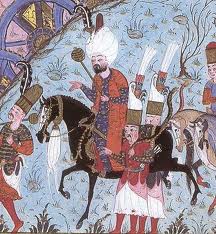
Theodora was succeeded by Michael VI, who was deposed by Isaac I. Isaac was crowned emperor by the military in 1057 but his reforms made him unpopular with the aristocrats. He was exiled (he later retired to a monastery) and replaced by Constantine X. After Constantine died Romanus IV married his wife.
Romanus fought successfully against the Seljuks (Turkish Muslims) but was defeated by Alp Arslan in 1071 at the Battle of Manzikert. Romanus was deposed by his stepson Michael VII who was succeeded by Nicephorus III. Isaac’s nephew Alexius I became emperor in 1081.
Emperor Constantine IX and Empress Zoë with Jesus
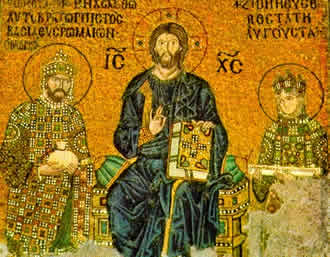
Other names: Eastern Empire, Late Roman Empire or East Roman Empire.
The city of was renamed Constantinople in the 4th century, and Istanbul by the Ottoman Turks in the 15th century.